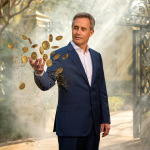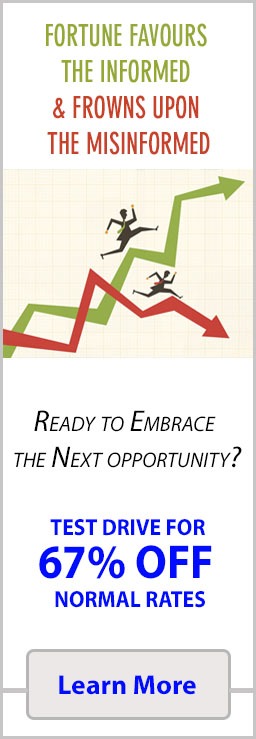Current Market Trends Hype Fades Discipline Pays
June 5, 2025
Introduction: The Market is a Paradox
The market isn’t logical. It’s psychological. It doesn’t reward intelligence—it rewards timing, nerve, and the ability to act while others unravel.
The minute you think you’ve got it pinned, it mutates. Certainty is a luxury for the naive.
The quantum world gave us a blueprint: nothing exists in one state until observed. The market plays by the same rules—floating between possibility and panic until someone pulls the trigger. And when they do, price responds—not to truth, but to perception.
Master that, and you’re not playing the game. You’re setting the board.
Crashes Demand Clarity, Not Emotion
Fear is loud. But real danger whispers.
The crowd flinches at volatility while quietly chasing risk. VIX flirting with mid-teen complacency, even as the undercurrent suggests a sharp mean reversion. Sentiment is giddy disguised as caution—an almost-delusional state.
Correction incoming? Good. That’s your payday.
Covered calls let you siphon cash off stagnation without divorcing your winners.
Cash-secured puts let you name your price—get paid to wait, then own quality when blood hits the street.
You don’t run from fire. You wear a flame-resistant strategy and walk straight through.
The crowd reacts. The elite anticipates.
Markets Lie. Narratives Don’t.
Recession? Collapse? Cue the sirens.
But look past the theatrics—this is theater wrapped in policy, staged by central banks and the corporate state.
The Fed isn’t trying to prevent a bust. It’s timing it.
They won’t save the system. They’ll curate its destruction, selectively and surgically.
Panic is a feature, not a flaw.
Reality is negotiated through consensus. If enough believe the lie, the lie becomes law.
Don’t chase fundamentals. Chase the belief structure behind them. That’s where the real moves originate.
We’ve Been Here Before — You Just Weren’t Looking
- 2004: The Religious Provocation Index flagged cultural instability before the West even blinked.
- 2015: The Adult Index tracked the rise of hyper-transactional ethics before “influencer morality” became currency.
- Now: The Psychological Fault Line is cracking—investor sentiment is being rewritten, and most haven’t noticed.
The next correction won’t be a market event. It’ll be a psychological revelation.
Those anchored to logic will drown. Those anchored to reflex will rise.
Volatility Unleashed: The Age of Market Whiplash
Volatility is not an anomaly; it is the heartbeat of the financial system. Our proprietary V-Indicator has shattered records, registering a seismic 16,900. Translation? The game is about to get wild.
- Elections will be a spectacle of chaos, introducing new levels of uncertainty.
- The era of “hot money” is just beginning—negative rates will pour gasoline on an already raging inferno.
- The market will ascend to unprecedented heights, defying conventional logic and shaking even the most steadfast bulls.
But remember this: No bull runs forever. One day, this market will hit a wall. But today is not that day. Pullbacks are not to be feared; they are invitations.
The strategy remains clear:
- Take profits when euphoria peaks.
- Use covered calls to extract value from sideways action.
- Deploy capital on significant dips through covered puts on high-quality stocks.
Dancing with Wolves: The Market’s Quantum Masquerade
The prophets of doom are out in force, their voices rising in a chorus of dread, warning of collapse as if the end is preordained. Yet, while they howl at the moon, the market stands—unmoved, enigmatic, and infinitely more complex than their linear narratives allow. This is not a chessboard; it’s a quantum masquerade, where every move is both a threat and an opportunity, every correction a feint rather than a fatal blow.
The market’s true nature is paradox. Panic and euphoria are not opposites but partners in a dance, swirling in superposition until the collective gaze of the crowd collapses the wave. The doomsayers crave a singular outcome, but the market, sly as a fox in lamb’s clothing, refuses to be pinned down. Yes, a reckoning will come—eventually. But today? Today, the market is a stage for those who understand that chaos is not the enemy, but the raw material of fortune.
The Fed: Puppetmaster in Silk Gloves
While the masses fixate on headlines and the shrill warnings of self-appointed prophets, the Federal Reserve moves with the subtlety of a master illusionist. Its power is not in brute force, but in the artful manipulation of perception and liquidity. The Fed is the invisible hand that steadies the table when the dice are rolling wild, ensuring that collapse remains a distant specter, not an imminent reality.
This is Machiavelli’s lesson in modern dress: true power is exercised quietly, with finesse, not bluster. The Fed’s interventions are rarely about saving the market—they’re about preserving the illusion of control. And as long as the crowd believes, the game continues. The real crash only comes when faith is lost, not when fear is loudest.
Mass Psychology: The Market’s Secret Engine
Here’s the truth the lambs never see: markets don’t crash when fear is at its peak. They crash when fear is forgotten, when the herd is drunk on certainty and blind to risk. Our proprietary Anxiety Index, a barometer of collective dread, still pulses with caution. As long as the crowd is anxious, the bull market’s heart keeps beating.
This is the fox’s edge—understanding that the wall of worry is not an obstacle, but the very fuel that propels prices higher. When the masses are paralyzed by doubt, the market is safest. When they’re euphoric, it’s time to sharpen your claws.
Wealth Creation: The Art of the Unseen
If the market were a simple machine, wealth would be a commodity, not a prize. But the market is a living organism, governed by invisible forces—sentiment, liquidity, manipulation—that defy easy analysis. Over 90% of participants are lambs, herded by emotion and cognitive bias, destined to be fleeced. The foxes, meanwhile, move in silence, exploiting the unseen connections that bind the system together.
Wealth is not created by following the crowd, but by anticipating its next move. It’s about seeing the entanglement between policy and psychology, between what is said and what is done. The fox knows that every panic is a buying opportunity, every correction a chance to accumulate assets at prices the lambs will envy when the dust settles.
The Doctrine of Inflate or Die
The Federal Reserve’s true creed is simple: inflate or die. The system is built on perpetual expansion, a cycle that only ends when the masses revolt or the illusion collapses. The irony is rich—over half the population sits on the sidelines, lamenting their lack of resources, even as they squander wealth on fleeting indulgences. They curse the game, but refuse to learn its rules.
The choice is binary: rail against the Fed’s manipulations and remain powerless, or embrace the trend and use every correction as a springboard to greater wealth. Complaints are the currency of the poor; action is the language of the rich.
The Fox’s Playbook: Ruthless Beneath the Wool
True financial mastery is not found in slavish devotion to technical analysis or the endless parsing of corporate reports. It’s found in the ability to read the crowd, to sense the shift in mood before it becomes news, to act with quiet ruthlessness while maintaining the appearance of innocence.
The market rewards those who can wear the lamb’s fleece while thinking like a fox—those who can move with the crowd when it suits them, and against it when the time is right. The next correction will not be the end, but an invitation. The only question is: will you be the hunter, or the hunted?
Conclusion: Upstream Thinking—Rewiring the Investor’s Mind
Most market commentary is trapped inside an echo chamber—recycling stale premises about rates, cycles, and sentiment, as if these are immutable laws rather than cultural superstitions. The real question isn’t whether the market will rise or fall; it’s whether the very assumptions driving the debate are true at all.
Let’s turn Bayesian thinking on its head. Don’t just update probabilities—interrogate the priors themselves. Why, for example, do we treat “mean reversion” or “Fed omnipotence” as gospel? Why does the crowd fixate on patterns in backward-looking data, expecting the future to rhyme? Most investors unconsciously anchor to stories that comfort the herd but crucify the outlier: that cycles are clockwork, that fear is always contrarian, that liquidity is infinite until it isn’t. What if these are brittle myths, not foundational truths?
The fatal error is mistaking consensus for certainty. The market’s most dangerous virus is the unexamined mental model—those invisible scripts that dictate action and guarantee mediocrity. The masses, programmed by conventional finance, react to volatility as a threat, not a gift; they see the Fed as a parental figure, not a political actor; they believe risk can be managed by formulas, not by flexible, adaptive thinking.
To transcend, you must go upstream—deconstruct the mental scaffolding that supports crowd behavior. Ask:
- Is this panic really irrational, or is it rational given flawed priors?
- Do repeated cycles exist, or are we just pattern-matching noise?
- Is sentiment a lagging indicator, or can it be the primary driver?
Here’s the contrarian edge: recognize that volatility is not the enemy but the signal; that cycles are social constructs, not physical laws; that the crowd’s fear is not always bullish, nor is their confidence always the bell at the top. The fox questions every assumption the lambs swallow whole.
The sharpest vector is not technical brilliance or market lore, but ruthless self-interrogation. True mastery is the ability to unlearn, to discard broken models, and to stand upstream, watching the river of mass psychology flow by—sometimes wading in, but never swept away.
In the end, the market is a mirror. It reflects not just numbers, but the hopes, fears, and ambitions of millions. To thrive, you must master both the art of perception and the science of action. Speak softly, move decisively, and remember: in a world of lambs, the fox eats well.
Intellectual Odyssey: Unveiling Rich Stories











